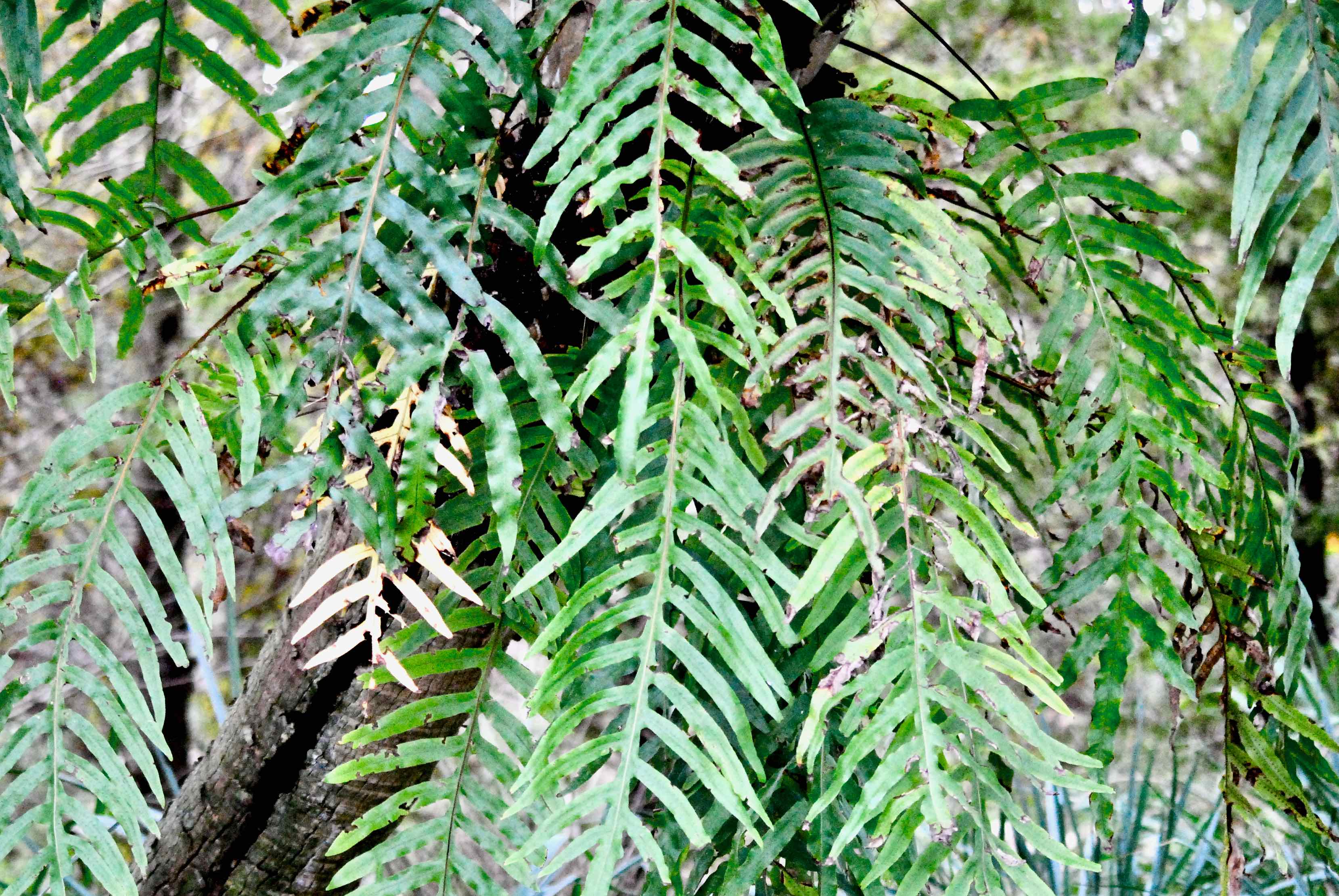
Golden polypody, photographed at Green Cay Nature Center, Boynton Beach, Palm Beach County, in February 2015.
It might sound crazy, but golden polypody, Phlebodium aureum, was once used as a cure for insanity. Forgive us for the pun, which we couldn't resist, but it is in fact true. The Seminoles would use golden polypody to steam and bathe people they considered mentally ill in hopes of returning their sanity.
How well it worked, we don't know. But considering the state of western psychiatry 150 or more years ago, its use is less bizarre than it might seem to our modern sensibilities, and likely more humane than what western physicians might have prescribed (inflicted).
In any case, golden polypody is a fern that is usually found growing as an epiphyte, or air plant, in the boots of a cabbage palm. In epiphyte fashion, it only uses its host for support and does it no harm. It less frequently grows on the ground in leaf litter.
Its fronds, or leaves, can be erect or arching, two or three feet long. It grows in moist forests and swamps, in full sun or in partial shade. The large red or brown roots that look like they're covered in hair is the trait that really distinguishes golden polypody.
It's a Florida native found throughout the Peninsula and parts of the Panhandle as well as Georgia and Alabama. It is also native to the Caribbean, Mexico, Central America and South America. It's been found as far away as Australia.
Actually, the Seminoles might not have been far off the mark in using golden polypody to treat the insane.
Some research indicates that golden polypody and other ferns have compounds that might be useful in treating Alzheimer's and other forms of dementia. Seriously.
The Seminoles also used the roots of golden polypody to treat chronically ill people and as an aid for chronically ill babies.
In parts of its range, golden polypody is used to treat rheumatism, heart disease and asthma. In Euope, it's used as a folk remedy for hepatitis and jaundice. Modern research has found that it might be helpful in repairing sun-damaged skin.
Golden polypody is a member of Polypodiaceae, a family of tropical ferns that have the trademark hair-like scales covering the rhizomes, or roots. Other common names include rabbit's foot fern, hare's foot fern, serpent fern and cabbage palm fern.
Click on photo for larger image
Links for Golden Polypody



